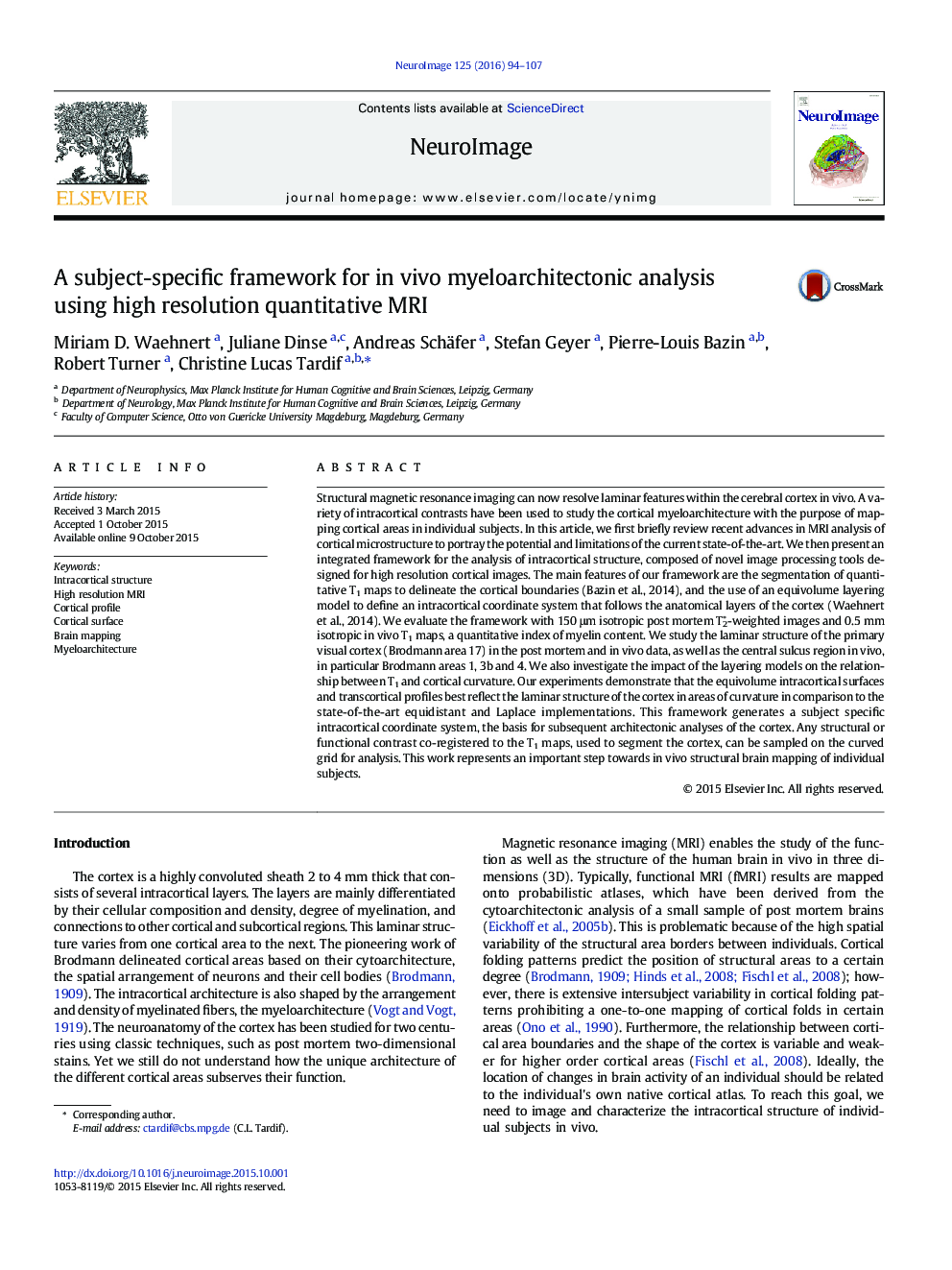| کد مقاله | کد نشریه | سال انتشار | مقاله انگلیسی | نسخه تمام متن |
|---|---|---|---|---|
| 6024060 | 1580883 | 2016 | 14 صفحه PDF | دانلود رایگان |

- The framework includes segmentation of T1 maps and equivolume cortical layering.
- All processing is performed at high resolution, 0.4Â mm isotropic.
- A native curved 3D intracortical coordinate system is defined to sample MRI data.
- The computed T1 cortical profiles accurately reflect cortical myeloarchitecture.
Structural magnetic resonance imaging can now resolve laminar features within the cerebral cortex in vivo. A variety of intracortical contrasts have been used to study the cortical myeloarchitecture with the purpose of mapping cortical areas in individual subjects. In this article, we first briefly review recent advances in MRI analysis of cortical microstructure to portray the potential and limitations of the current state-of-the-art. We then present an integrated framework for the analysis of intracortical structure, composed of novel image processing tools designed for high resolution cortical images. The main features of our framework are the segmentation of quantitative T1 maps to delineate the cortical boundaries (Bazin et al., 2014), and the use of an equivolume layering model to define an intracortical coordinate system that follows the anatomical layers of the cortex (Waehnert et al., 2014). We evaluate the framework with 150 μm isotropic post mortem T2â-weighted images and 0.5 mm isotropic in vivo T1 maps, a quantitative index of myelin content. We study the laminar structure of the primary visual cortex (Brodmann area 17) in the post mortem and in vivo data, as well as the central sulcus region in vivo, in particular Brodmann areas 1, 3b and 4. We also investigate the impact of the layering models on the relationship between T1 and cortical curvature. Our experiments demonstrate that the equivolume intracortical surfaces and transcortical profiles best reflect the laminar structure of the cortex in areas of curvature in comparison to the state-of-the-art equidistant and Laplace implementations. This framework generates a subject specific intracortical coordinate system, the basis for subsequent architectonic analyses of the cortex. Any structural or functional contrast co-registered to the T1 maps, used to segment the cortex, can be sampled on the curved grid for analysis. This work represents an important step towards in vivo structural brain mapping of individual subjects.
Journal: NeuroImage - Volume 125, 15 January 2016, Pages 94-107